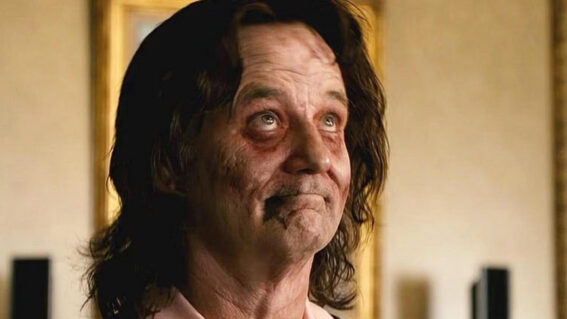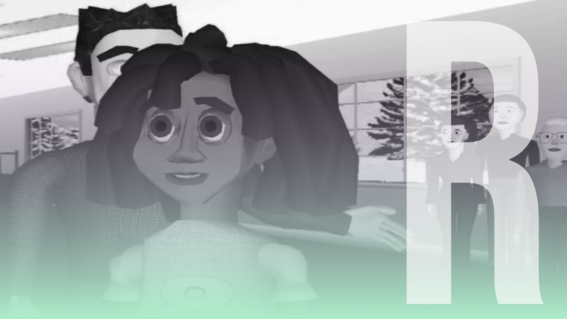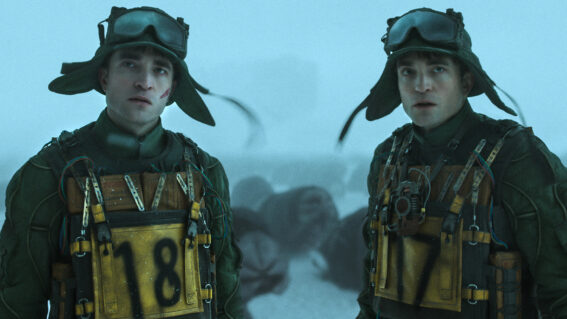“The Stars Are Still Not Right”
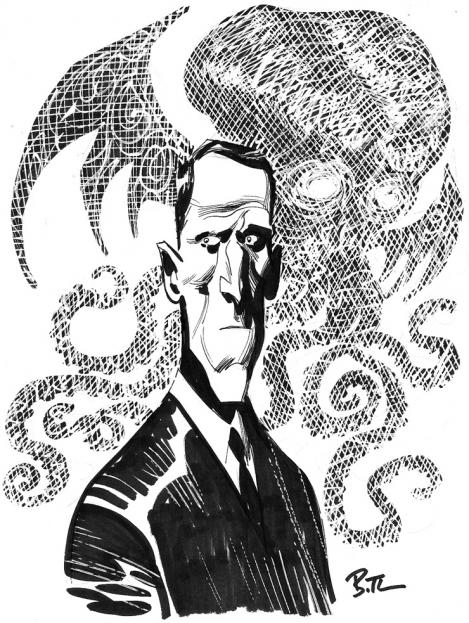

There are many ‘hidden contributors’ to modern popular culture. People and/or their texts that have shaped so much of what we see today in mass media (and/or our modern concepts and attitudes towards issues) whose influence is known only to those who have taken the time to discover the truth for themselves (and, in the process, have become slathering, wild-eyed, demented fanboys and fangirls with a feverish hunger to celebrate their discoveries for all the world to see).
Arguably one of the most famous hidden contributors is none other than the early 20th Century writer of pulp horror and psychedelic science-fiction: Howard Phillips (H.P) Lovecraft. In fact, there are two things that are widely known about Lovecraft: first that he could well be the father of 20th and 21st Century horror fiction as we know it today, and secondly that the entertainment industry have, after almost a hundred years, failed to faithfully adapt any of his works to the medium of film and television. And that’s not for lack of trying either.
Step alongside with me as we delve into the vaults and inspect what has made Lovecraft such an important contributor to modern culture and examine how close filmmakers have come to doing one of his stories justice (or how far they are still missing the mark, according to both critics and fans of his work).
There is a saying that ‘Hollywood is always about ten years behind the rest of the world’. What it means is that the denizens of the San Fernando Valley in southern California like to wait until something is on the verge of exploding onto the global consciousness before trying to make a movie about it; practicing that age-old movie-making tradition of ‘well if people don’t know everything about something then why would they go see a movie about it?’ that has served them so well (#sarcasm). Take the Internet for example: films about ‘the net’ as primary subject matter erupted in the mid-1990’s, around the time the world (i.e. mass media) began to take notice of terms like ‘the world wide web’ and ‘cyberspace’, even though computer-literate individuals and families had been using Internet-like services in North America and Europe for almost a decade prior.
Hollywood almost always bets on the safest horse, even if it consistently places second or third, rather than the underdog with an outside chance to win (contrary to the kinds of stories Hollywood likes to tell in their films). Perhaps its is this reason that, despite modern horror fiction (novels, TV shows, games and films) owing so much to his works, Lovecraft has never been Hollywood material. Everyone is constantly exposed to his influence and ideas, but – on a global scale – nobody has ever heard of him outside of critic/geek circles. Lovecraft’s “ten years” have lasted almost a century.
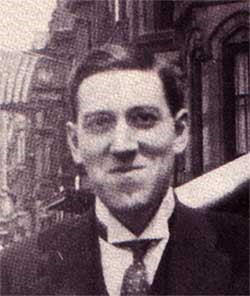
Some background history: H.P. Lovecraft (1890 – 1937) was a New England author, famous in his time for his contributions to the genre of ‘pulp literature’ and famous in our time for scaring the hell out of everyone (in a good way). Known for being a sickly and reclusive individual with a phobia about seafood (more on that later), his early life was traumatized by the loss of both parents to insanity rising from the complications of syphilis. Drifting in and out of poverty for most of his life, Lovecraft was an antiquarian eremite who held onto some very complex (and often incompatible) views on the world; a confirmed atheist who wanted to believe in Egyptian gods, an amateur astronomer and scholar who was deeply suspicious of technology and scientific endeavor and (most controversially) a man who was fascinated by his own irrational ‘fears of the unknown’ and yet couldn’t come to terms with his fear of immigrants and his own period-influenced racism which colors many of his early stories.
Lovecraft was a member of the United Amateur Press Association – a nationwide club-house for young writers to distribute, develop, edit, critique and refine their stories with the help of other writers before seeking professional publication. Lovecraft made a living as an editor and ghost-writer within the Association as well as for the premiere pulp story magazine of the day: Weird Tales, inserting his own themes and ideas into the works of some of the genre’s up-and-coming stars such as a teenage Robert Bloch (author of Psycho), Ashton Clarke-Smith and Robert E. Howard (writer of Conan The Barbarian). And in between all this and his battles with clinical depression, Lovecraft penned his own work — work that has outshined the legacy of all other the pulp writers of his time.
Lovecraft’s writing is founded entirely on the premise of ‘fear of the unknown’, a concept positing that the universe is so vast, so complex, so infinite in possibility and variation that not only could our limited minds never truly comprehend it, but that it also contains unimaginable, malevolent forces that could snuff out human civilization with a breath were they allowed to unleash themselves on planet Earth. Lovecraft refers to an evil that is a function of the universe, an alternative to the traditional concepts of evil that pertains to ideas like ‘hell’ or ‘the devil’ or anything to do with an after-life. Lovecraft’s stories suggest that mind-bending, thought-crushing, heart-attack-inducing horrors lie in wait, either in other dimensions or on other planets out in deep, cold, space, waiting to claw back into our reality and take our world for their own purposes.
They’re not interested in humanity – who are no more significant than bacteria in their presence. They merely want everything that is ours and to eradicate us entirely for their sport. And as we extend our instruments of science and reason to explore the universe, we may endanger our own sanity by becoming aware of them…or worse, they may become aware of us. Sure, sounds pretty cliche doesn’t it? I mean, a lot of horror uses these concepts right? But here’s the kick: Lovecraft was the first. He’s the guy who invented the notion that you didn’t need to borrow from folk-tales or Gothic literature or the Biblical concepts of good and evil in order to create ghoulish stories of terror. Lovecraft, for all intents and purposes, was the first author to successfully invent his own monsters. And my what monsters they were.

Much of Lovecraft’s work falls into, what is known today as, the Cthulhu Mythos.
Say it with me: ‘ka-thoo-loo’. Don’t sweat it, he’s one of the easier names.
The mythos suggests that, out in deep space and also trapped in dimensions outside our own, several races of magical-extra-terrestrial monsters (with god-like powers) are imprisoned and waiting to return to rule our universe and destroy us all in various horrible ways. These monsters, referred to as The Old Ones (or some variant) in his stories, maintain their evil influence in our world by masquerading as powerful deities who can be summoned with the right incantations and correct positioning of the stars, or by psychic control of their human followers, or by commanding extraterrestrial races they’ve enslaved to visit Earth and do terrible things to its inhabitants.
Some of these Old Ones that feature in stories throughout the mythos include Great Cthulhu (a Godzilla-sized, bat-winged, octopus-faced monster who sleeps in the Pacific Ocean and commands doomsday cults to worship him by manipulating their dreams), Yog-Sothoth (a trans-dimensional configuration of orbiting spheres who is both a sentient creature AND a living portal to other dimensions), Shub-Niggurath: The Black Goat Of The Woods With A Thousand Young (a multi-mouthed, multi-tentacled god worshiped by early pagans who seems to be benevolent towards humans, but that could just be part of the Old Ones plans to mislead their followers), Azathoth (supposedly a physical representation of Chaos, a mad, blind god who sits at the center of the universe and is held in check by the piping of ghastly ‘hypnotic music’) and Nyarlathotep (a shape-shifting god who, in Lovecraft’s universe, was the inspiration for The Devil). Apart from the gods, there are countless other creatures that threaten humanity such as the Mi-Go (extraterrestrial slaves who are preparing the Earth for the coming of the Old Ones), Shoggoths (protoplasmic, aquatic monsters who build alien technology), the Hounds of Tindalos (horrible, skeletal, dog-like creatures that exist inside certain curves of space-time) and the Deep Ones (frog-like spawn of the god Dagon who live in coastal waters and are slowly taking over remote villages, carrying off humans for food or to mate with). Finally the world of Lovecraft also features a host of human-world artifacts and locations significant to the stories including the mysterious Miskatonic University, the town of Arkham (yes, adapted later into the world of Batman) and several ‘forbidden tomes’ of knowledge which contained histories and spells on how to summon the Old Ones including the most famous of them all: The Necronomicon (yes, an invention of Lovecraft’s, not Sam Raimi!).
Lovecraft’s stories suggest that human civilization is on a perpetual countdown to doomsday and are often told from the perspective of unsuspecting, ordinary, contemporary people who stumble into the fringes of the Old Ones’ conspiracies (run-ins with sacrificial cults, exploring haunted houses and cemeteries to discover them inhabited by creatures from other dimensions, visiting remote towns whose human stock has genetically cross-bred with monsters, discovering lost civilizations who worshiped the Old Ones, meeting mad scientists whose experiments threaten to prematurely open dimensional gates etc) and then meet some sticky or grisly end (usually involving losing their sanity). Lovecraft’s tales – which are mostly short-stories – feature themes involving the inevitable destruction of the world, inter-species breeding and cannibalism, alien visitations, ancient malevolent forces guiding and shaping human history, the merging of magic and science with catastrophic results, astral projection, forbidden knowledge, reanimation of the dead and the revelation that all of the world’s fears pertaining to “evil” and its related paraphernalia are stemmed from the same source – fear of the Old Ones and their eventual return.
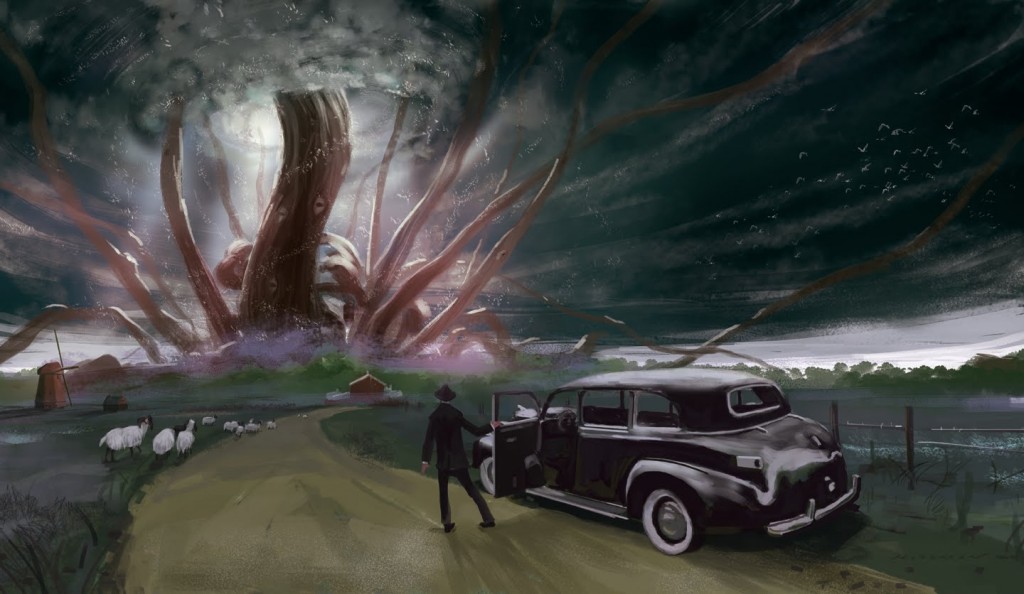
Sounds like good meaty stuff for horror story-telling, doesn’t it? And given that Lovecraft’s works are slowly falling into the area of public domain, you’d suppose these would make an ideal foundation for sci-fi/horror filmmaking? Well, all of Lovecraft’s fans are in agreement with you and yet, sadly, this has never been the case. Lovecraft is still, even today, out of the global mindset and this makes Lovecraft’s stories very risky business indeed. Outside of films, the Cthulhu Mythos has enjoyed fairly strong popularity. As pointed out before, Lovecraft is arguably the father of modern horror; the first author to successfully define his own unique concept of ‘evil’ and then spin it into tales of terror.
Since Lovecraft’s death, Cthulhu Mythos stories have continued to be penned by his friends and followers like Robert Bloch, Clarke-Smith, Henry Kuttner, Ramsey Campbell, Lin Carter, August Derleth and Robert M. Price. Modern authors have also taken to contributing to the mythos with the likes of Brian Lumley, Harlan Ellison, Stephen King and Neil Gaiman making significant contributions to Lovecraft’s unique genre. Moving on from just mythos stories, Lovecraft’s notions of darkness and evil lurking outside the religious definition has heavily influenced writers like Clive Barker, Joe R. Lansdale, Alan Moore, Junji Ito, F. Paul Wilson and Stephen King. King’s own writing professes, in numerous instances, that his universe is either connected to – or exists within – Lovecraft’s universe. Outside of literature, Lovecraft has thrived in the world of music. Apart from inspiring a plethora of very creepy cover-art for heavy metal CDs, Lovecraft’s mythos has been the popular topic for a lot of songs by artists such as Black Sabbath, Dead Mau5, The Mountain Goats, Blue Oyster Cult, Fields Of The Nephilim, Marillion, Mercyful Fate, Joe Satriani and – my personal favourite – this little number from Metallica:
But where Lovecraft’s work has really thrived in mass media has – of course – been at the very cutting edge of entertainment and story-telling: games. Starting with a highly successful table-top role-playing system put out by Chaosium in the early 80’s (entitled The Call of Cthulhu), the mythos has been successfully adapted into a highly successful series of games for platforms ranging from personal computers, video game consoles, trading cards and more. Lovecraftian (i.e. resembling the works of Lovecraft, but not actual adaptations) characters, monsters and settings have turned up in everything from Dungeons & Dragons to World Of Warcraft, from Yu-Gi-Oh to the Quake games and many successful gaming titles such as Half-Life, Deadspace, Alone In The Dark, Penumbra, Amensia, Mass Effect and Eternal Darkness are so effective because they utilize Lovecraft’s influence in order to cater to a well-read, culture-savvy audience who will appreciate it.
‘Lovecraftian’ is the key word here. Because although H.P. Lovecraft as an entity has yet to enter the world’s global consciousness, his influence over global culture has permeated at almost every level. Lovecraftian elements (whether it be the notion of doomsday cults praying to strange gods or just the over-enthusiastic use of tentacles as a design aspect) have crept into all forms of culture in ways that people may be unaware. Television is a notable culprit where Lovecraftian tropes (or visual designs inspired by the stories) have turned up in shows like Babylon 5, Hercules: The Legendary Journeys, Dark Shadows, The X-Files, The Twilight Zone, Star Trek, Charmed, Buffy The Vampire Slayer, Masters Of Horror and Dr Who.
Lovecraftian elements are also a major trope in the world of comic books which would be far too numerous to list here (practically every superhero in existence has fought some sort of ‘eldritch’ monster or exists in a universe which is a facsimile of Lovecraft’s own – e.g. Mike Mignola’s Hellboy). Lovecraftian elements have also played a role in the world of cinema, which finally brings us back around to the topic at hand.
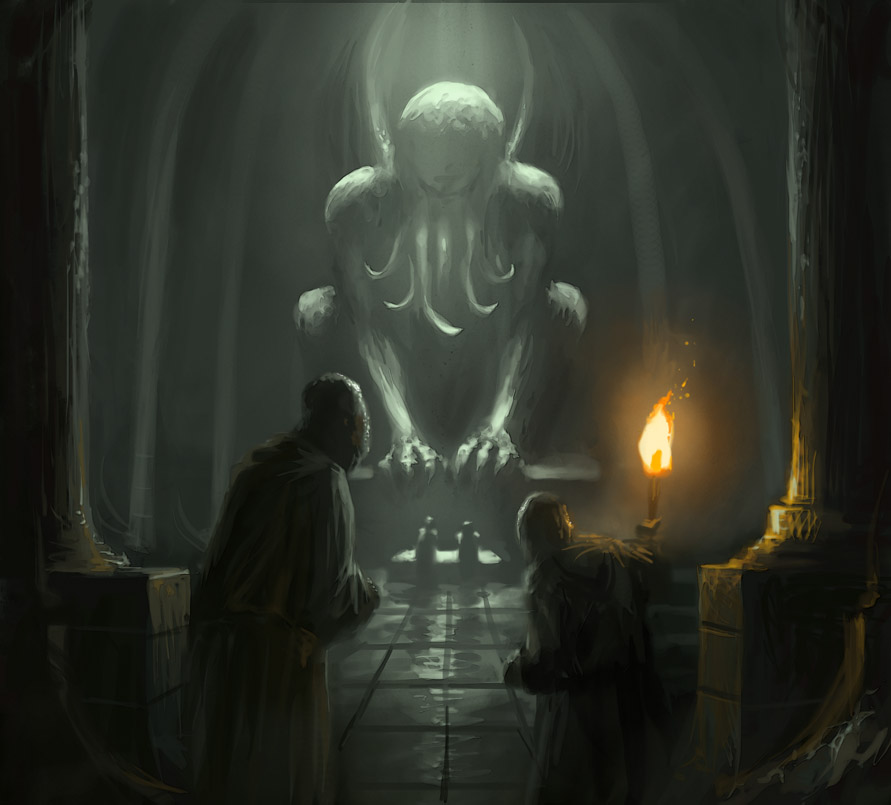
Movies that are adaptations of the works of H.P. Lovecraft, for the most part, aren’t. There are some fairly obvious reasons for this, regardless of whether they are deemed by critics and fans as “valid”. Firstly, Lovecraft’s stories create tension because they offer mere glimpses into a larger world of horror and doom. You never really find out what’s going on in any of his stories, you merely are given pieces of a puzzle that you put together in your head (which become easier as you read more of his stories) and in doing so you, like the doomed protagonist of each story, revile in the notion that there are things going on in the universe that we cannot understand nor fight. The more stories you read, the glimpses you’re given create an increasingly expanding picture of the inevitable destruction of all humanity.
Attempting to recreate that in a stand-alone, two-hour, film would be quite difficult. And let’s face it, any Lovecraft movie which hints at ‘the horrors of the void’, but doesn’t contain a rip-roaring showdown against some Elder God will probably not satiate audiences. And a film that does do this would be… fiendishly expensive to say the least. So, a filmmaker’s answer to adapting Lovecraft’s stories is to strip the Lovecraft out of it.
Classic Hollywood (i.e. the studios) have never adapted Lovecraft, though they’ve financed a lot of films with Lovecraftian elements. All of the supposed ‘straight adaptations’ were done by independent filmmakers like Roger Corman, Stuart Gordon, Brian Yuzna and Hammer Horror. There are a plethora of ‘adaptations’ such as The Dunwich Horror (1970), Die Monster Die (1965), The Crimson Cult (1968), The Haunted Palace (1963), The Lurking Fear (1994), the horror anthology Necronomicon (1993) and The Unnameable (1998). Suffice it to say, they do not do their source material justice and are fairly poor films to boot.
Films which are Lovecraftian, on the other hand, fair better in terms of quality and paying homage to the mythos’ themes, even if they have nothing to do with Lovecraft’s stories. Movies like Hellboy, Quartermass & The Pit, The Last Wave, John Carpenter’s Prince of Darkness, Children Of The Corn, The Evil Dead trilogy, Cast A Deadly Spell, District 9, The Mummy, Something Wicked This Way Comes, Cloverfield, Don’t Be Afraid Of The Dark and many more have kept the spirit of Lovecraftian horror alive and allowed it to inspire new generations to follow and also be led back down the path towards H. P. Lovecraft’s original works.
And of course there are the stand-out entries in the unofficial Lovecraftian genre…
Ghostbusters
Aside from writer Dan Akroyd’s professed love for Lovecraft, the 80’s classic Ghostbusters is a textbook film in Lovecraftian horror, even though it is a riotous comedy. Featuring elements including evil cults, unholy geometric designs infused into a skyscraper, men of science using machines to fight the supernatural, ‘creature-like’ designs for the ghosts and, of course, the finale where the heroes must battle an ancient Sumerian God named ‘Gozer’ who hails from another dimension and intends to destroy the world (taking the destructive form of a giant marshmallow man instead of Cthulhu), everything that makes Lovecraft’s style scary is here inverted for big laughs and terrific spectacle. It should be noted that the Ghostbusters did, eventually, go toe-to-toe against Cthulhu in animated form. The fantastic episode can be viewed here.
The Thing
John Carpenter gets two great entries into the world of Lovecraftian horror. First is his seminal remake of The Thing (adapted from the story Who Goes There?) which deals with a shape-shifting, alien who can disguise itself as anyone and the claustrophobic paranoia that erupts when it invades an Antarctic research station. Elements featured include a doomsday scenario for the world, a frozen wasteland with no hope of escape, lots and lots of icky tentacles and the ever-present threat of insanity. The Thing is one of many films (alongside Ridley Scott’s Alien and Prometheus) which are regarded as deliberate (or unconscious) retellings of Lovecraft’s longest story: At The Mountains Of Madness which involve a research team visiting the Arctic to discover an underground temple populated with alien creatures.
In The Mouth Of Madness
Carpenter’s second entry comes with his delightfully kooky film In The Mouth Of Madness which throws up a strange and delicious mix of pure Lovecraftian horror and a twisted send-up of Stephen King. As the investigator played by Sam Neill delves deeper into the mind of horror novelist Sutter Cane, he realizes that Cane is a conduit for creatures from another dimension who are using Cane’s novels as ritualistic devices in order to open up a gateway between our world and theirs. Elements include ancient evil gods, dimensional portals, books that send their readers mad, towns filled with creepy, inhuman, people, Lovecraftian artwork and more.
Event Horizon
Event Horizon marks Sam Neill’s second tussle with an evil from another dimension, this time in what is (essentially) the last decent film Paul W.S. Anderson ever made. Billed as a ‘haunted house movie in space’, the film has acquired a cult following for its wonderfully bleak atmosphere and terrifying imagery, all suggesting that the ship had been sent into a dimension of pure chaos and has come back with traces of that power infused within its machinery. Lovecraftian elements include supernatural powers infusing with technology, a dimension of evil, paranoia and, of course, that disturbing ship’s log sequence…
The Mist
Stephen King’s influence from Lovecraft is undeniable, the horror master having penned several mythos stories himself as well as crafted many novels (particularly It and his Dark Tower saga) that pay homage to the genre. But out of all King’s works that have been adapted to film, Frank Darabont’s B-movie-style version of The Mist is the definitive notion of Lovecraftian horror. Elements include an invasion of Earth by creatures from another dimension, intense paranoia, insanity, a doomsday scenario and human beings expressing their very worst nature.
Ringu
While the American remake gets thrown around a lot as being superior, I stand firmly on the side of the Japanese original. Ringu, for the most part, seems to play like a standard Japanese ghost story, but its Lovecraftian elements are stand-out and (for me) the source of why this version really creeps me out while America’s The Ring feels tame by comparison. The elements are subtle, but unmistakable: the implication that Sadako is a hybrid of an evil creature from the ocean, the merging of supernatural powers with technology (the videotape), the ability for dark powers to drive their victims insane, prophetic doomsday scenarios, it just gets weirder and weirder the closer you look.
The Cabin In The Woods
I can’t tell you why The Cabin In The Woods is Lovecraftian without spoiling the film. In fact, telling you that it is Lovecraftian IS spoiling the film. Well too late, but I’m not saying anything else. See it for yourself.
Hellraiser
Clive Barker’s entire literary career has been, for all intents and purposes, a reworking of Lovecraftian horror at its core. Barker’s ability to take the amorphous notion of generic evil (as dictated by Biblical influences in his stories) and transform it into a world of agendas, plans, priorities, characters and revelations makes his work unique unto himself and a treat for his readers. Hellraiser (and its source novella The Hellbound Heart) embodies these notions to the letter; colliding the lives of unsuspecting characters with forces from another dimension where pain is the ultimate expression of pleasure, accessible only by a magic puzzle box known as the Lament Configuration. Elements include evil parallel worlds, doomsday scenarios, the trivialization of humanity, god-like creatures bent on destruction, forbidden knowledge that drives you mad and a magic artifact that is the key to unlocking the dark powers beyond our realm.
But what about the direct adaptations? Surely they’re not all bad nor overshadowed by the Lovecraftian-influenced entries? Well, funnily enough, there are a tiny handful that have achieved some respect with discerning Lovecraft fans. Of course you have to remember that many of us are still holding out for a film that does justice to Lovecraft’s works just as many games, comics and musical interpretations have done to date.
At The Mountains Of Madness
There was some light at the end of the tunnel when it was announced, in 2010, that Guillermo del Toro was teaming up with James Cameron and Tom Cruise to produce a blockbuster sized adaptation of At The Mountains Of Madness. Concept art for the film had surfaced on the internet, though it is not known if these are authentic to the production:
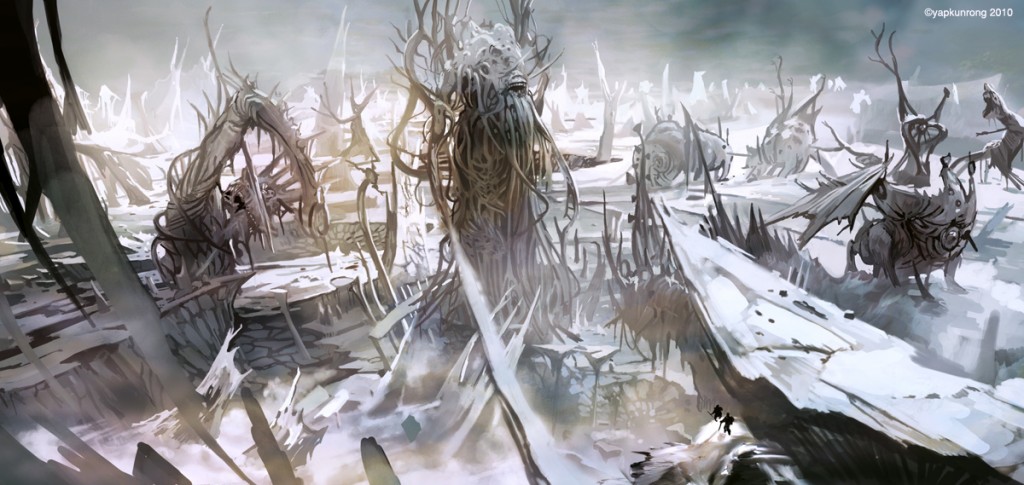
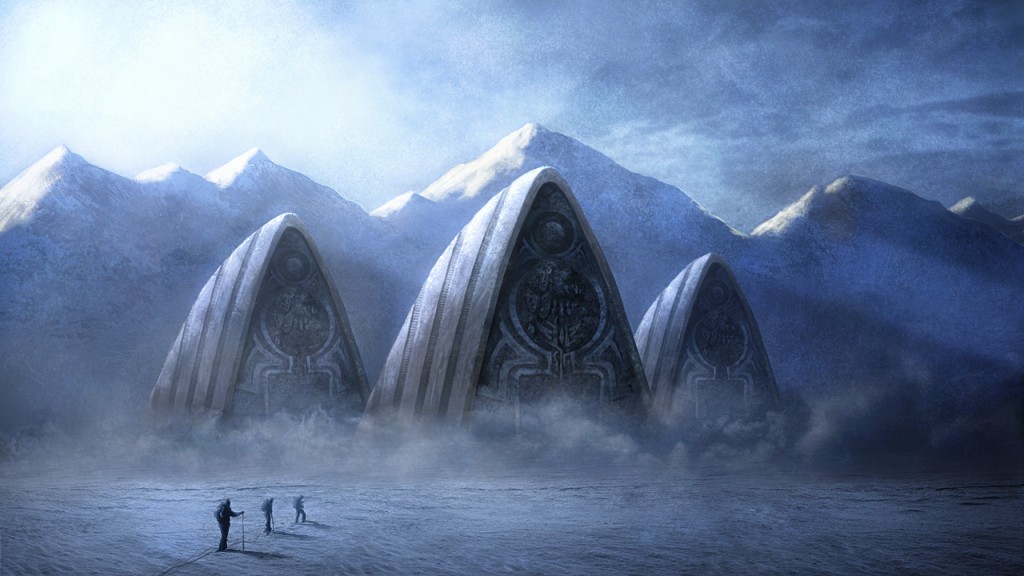
Sadly, for Lovecraft fans, the project was put into turn-around and eventually abandoned, despite the attachment of such high-profile names who were enthusiastic about turning the film into reality. What we find ourselves left with is a rag-tag collection of independent ‘classics’ which get high marks for their execution and entertainment value, plus their devotion to the source material, though they may remain nothing more than curious blips on the radar when compared to the kind of Lovecraft film that would be required to really capture the imagination of the larger, film-going, public.
Re-Animator
http://www.youtube.com/watch?v=UCM7oG9UGKc
Stuart Gordon is probably cinema’s most devoted Lovecraft fan, having created no less than seven feature film adaptations of his stories. Working solely in the independent horror industry, Gordon’s films are low-fi to say the least, but out of his filmography come three titles which transcend their humble origins and become genre classics of their own right. Re-Animator, based on Herbert West: Re-Animator is a modern, black-comedy, adaptation starring the incomparable Jeffrey Coombs in the title role. What the film lacks on Lovecraftian elements, it makes up for with B-movie chills, frights, titillation and laughs which have made this film a fan-favourite and Gordon’s most renowned film to date.
From Beyond
http://www.youtube.com/watch?v=zgZuCXY-vR8
From Beyond is Stuart Gordon’s sci-fi-body-horror interpretation of the Lovecraft story of the same name. Again Gordon adapts the story freely, removing most of Lovecraft’s subtlety for something over-the-top and unrelated to the mythos (except where the audience may choose to infer themselves). However, as a stand-alone film, it is popular with genre fans and regarded as a fun and cheesy romp into the world of gore and psychedelia and remains a Lovecraft-related product that people still enjoy today.
Dagon
Dagon, Stuart Gordon’s last notable entry, is a favourite among fans as it boasts to be the most accurate and faithful version of any professional Lovecraft story adaptation. Based on The Shadow Over Innsmouth, the film is crippled by Gordon’s cheesy production values and his own short-comings as a director, but indeed is almost scene-for-scene accurate to the short story despite its modern setting and vastly different protagonists. Dagon remains, to this day, the closest we’ve ever gotten to a straight-movie of a Lovecraft story.
The final two entries that are worth looking at aren’t professional productions, but amateur films produced with staggering innovation by the Howard Phillips Lovecraft Historical Society: a fan-club devoted to producing Lovecraft-based props, costumes, radio-plays (and now films) for sale.
The Call Of Cthulhu
Their first entry was a silent-film adaptation of the seminal tale The Call Of Cthulhu. An experimental film, it was produced with the mindset ‘what if Hollywood had made a silent film of The Call Of Cthulhu the same year it was published?’ The film’s minute attention to detail in recreation the artifacts and style of silent films (complete with film deterioration, audio pops and stop-motion animation) as well as using a host of clever cinematic tricks to create an enormous sense of production value, The Call Of Cthulhu is – to date – the most accurate, faithful, true-to-genre and atmospheric adaptation of a Lovecraft story. Provided, of course, that you’re a fan of silent cinema. The film is available for sale at their website: http://www.cthulhulives.org/
The Whisperer In Darkness
The Whisperer In Darkness is the HPLHS’s second film entry, this time adapting the short story of the same name into a 1940’s studio horror. The film offers an even larger sense of production value than before, augmented this time by the fact that it’s a ‘talkie’ and runs at feature-length. However, the addition of speaking parts for the actors and some of the film’s technical issues make it a lesser entry than The Call of Cthulhu, especially given that a large portion of the film consists of actors standing around and talking about the plot. None the less, if it is authenticity, faithfulness and atmosphere you seek (plus some clever tricks and spooky fun) then this is also worth your while, especially considering this was produced by an amateur theatrical group.
And with that, we must now end our journey. We’ve seen the influence Howard Phillips Lovecraft has had over our culture and we’ve also seen how, despite that influence, he is still cinematic anathema for mainstream film and television. Will this ever change? It’s hard to say, though we can avow that the Internet has started to play a major role in bringing fans together and with that, it is likely that fans will demand more vocally and point more people towards Lovecraft’s works in the hopes of reaching a kind of global consciousness critical-mass…so that Hollywood can finally make a movie about it ten years later. Until then, we have to accept that the rituals cannot be completed, the words cannot be read, the stars are still not right and Great Cthulhu will continue to sleep, dreaming, in R’Lyeh.
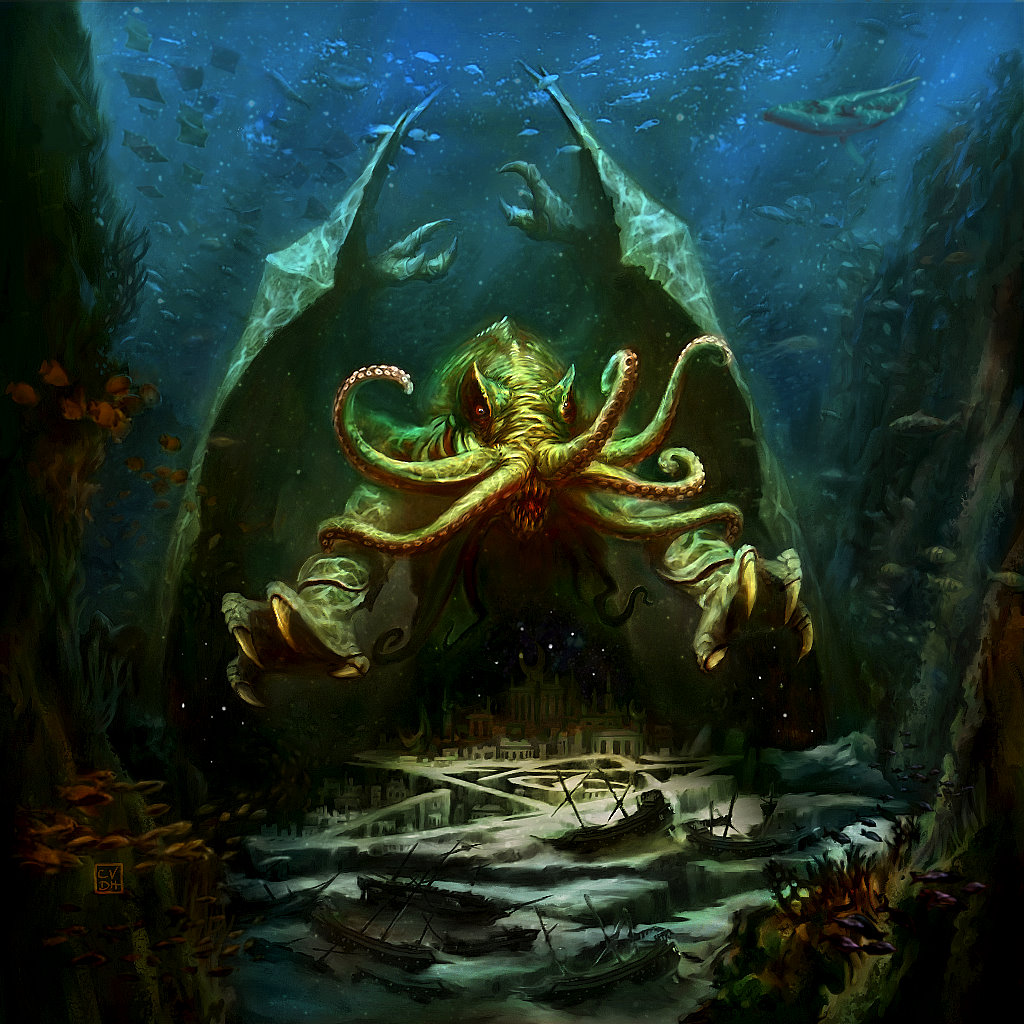
Thanks for reading. Cthulhu f’tagn!






